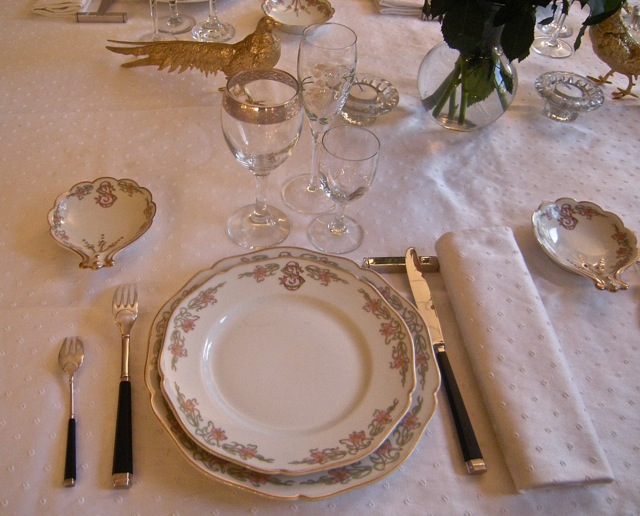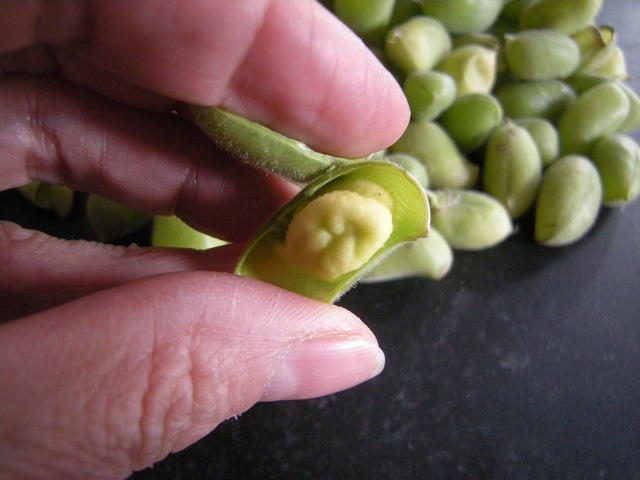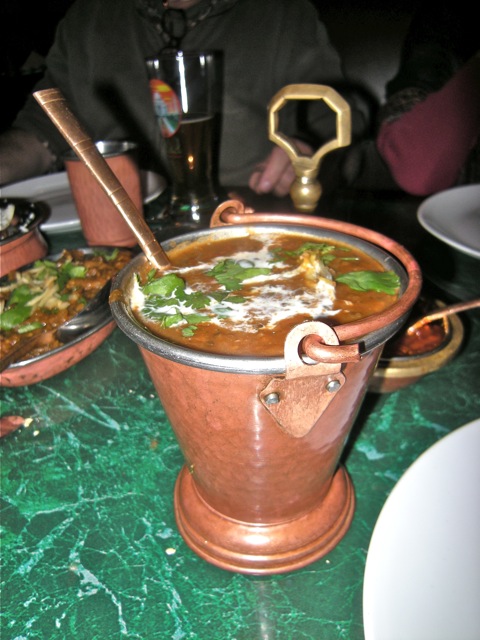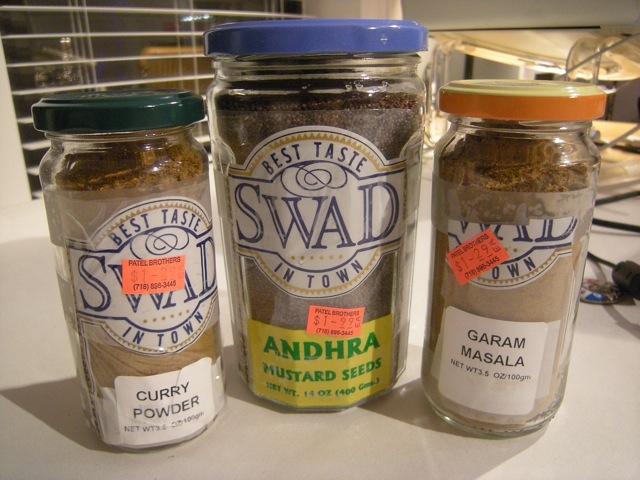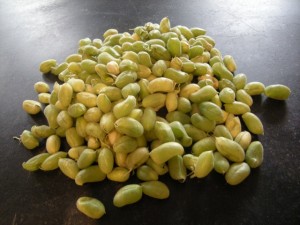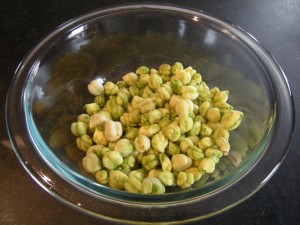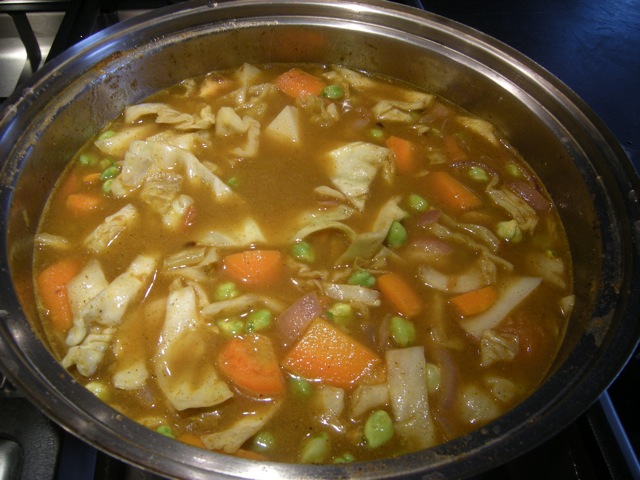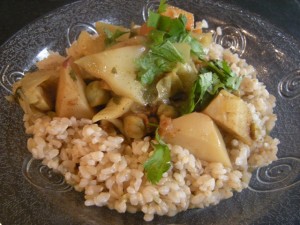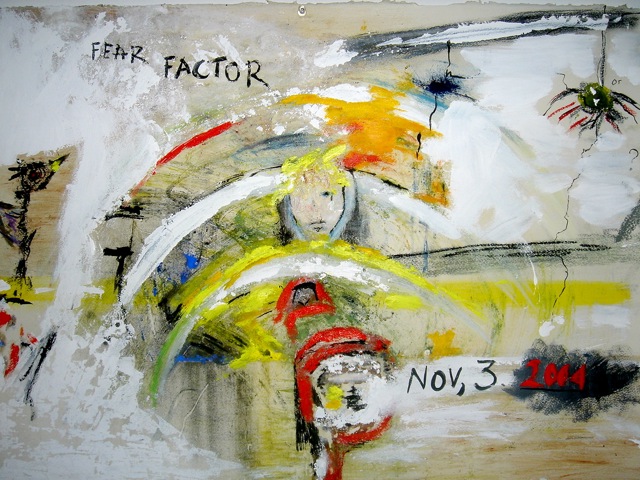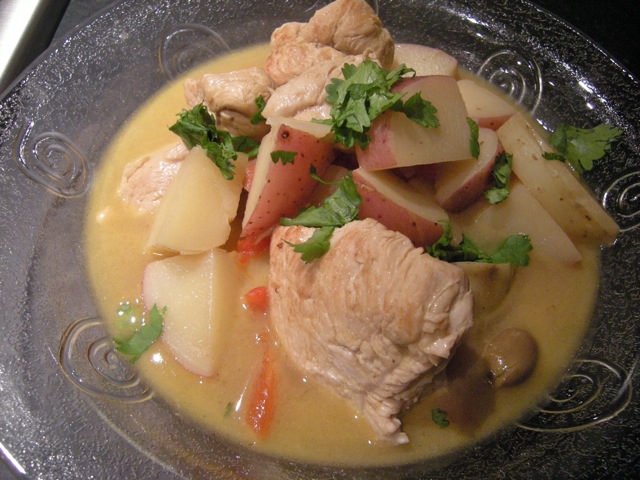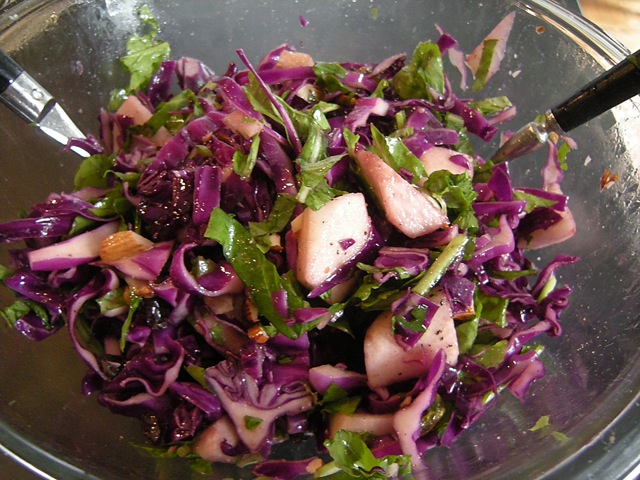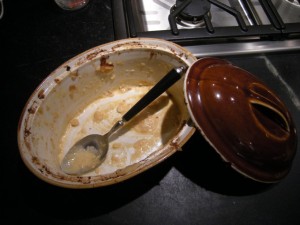We are not particularly attached to any specific Christmas tradition although this year we were eager to have an intimate family dinner at our new place and to take out the family heirloom china that had been in boxes for a while. So after consulting with husband, sons, and daughter in law, we agreed on a menu:
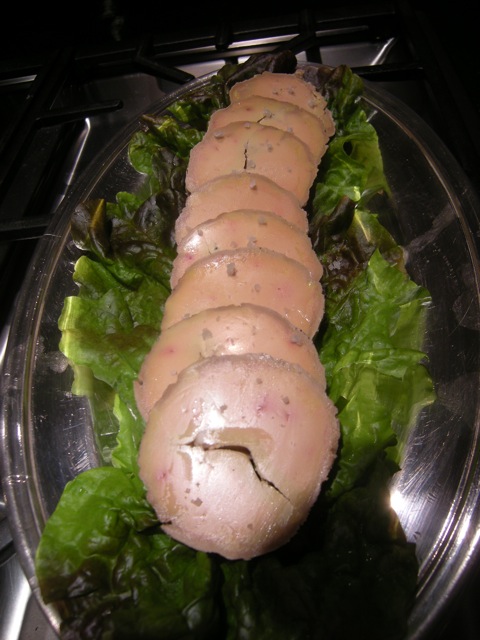
Home made Foie Gras au Torchon
Fisher Island Oysters
Roasted Suckling Pig
Mashed potatoes
Apple & Chestnut Bourbon dressing
Cinnamon Rice Pudding
I had never made Foie au torchon before but my friend, chef Pierre Landet, the executive chef at Cercle Rouge, suggested this excellent idea —by the way, Congrats to Pierre soon to be made Maître Cuisinier or Master Chef! This simple recipe keeps the foie velvety & easy to deal with — even though I have to confess I missed one step.
First break the lobes and delicately take out the nerves and veins. Some people get crazy about the cleaning process and turn their foie into a battlefield. My previous experiences on making terrines had taught me that there is no need for over cleaning. I then seasoned the foie with salt and pepper and rubbed some Armagnac on it. Next step is to put the lobes on top of each other and roll the foie very tightly in cheesecloth —like a sausage — and poach it in a broth at 140ºF for 5/7 minutes. Now cool your foie in a bath of cold water with ice cube to stop the cooking. This is the step I missed! So mine was a little over done but no one complained.
Our next course was a dozen Fisher Island oysters each. It gave me a good work out to open the 5 dozen. They were extremely fresh, all very tightly shut. The first taste of a Fisher Island oyster comes as a hit of seawater, followed by the very clean taste of the firm texture of the shiny silvery mollusk. Our favorite way to eat oysters is to add a few sprinkles of lemon, Pierre (Joris) likes to add some fresh ground pepper on his. The experiment this year was to add a ½ teaspoon of a fresh homemade salsa in the oyster shell. Pierre remains skeptic, the kids more enthusiastic; I do like the bite of the salsa on a few of them. We paired them with a pleasant Sancerre. No other info on that, as the bottle got recycled before I could take a picture of it!

Then came the “piece de resistance:” our roasted suckling pig, an ever so festive and ever so delicious dish. We ordered it from d’Artagnan, and upon it’s arrival we lovingly massaged the piglet with a marinade of lemon, olive oil, thyme and garlic; this can be done 24 to 12 hours before roasting it. We had decided against stuffing it in order to keep our meal “lighter” and most of all to keep the roasting time down! It took about 3 hours for our 10lbs piglet. Pierre (Joris) handled the roasting, he diligently basted it every twenty minutes and covered and uncovered it with aluminum foil as he felt the need to. It turned out perfect, done but moist! I made last minute jus —or light gravy— by deglazing the piglet’s pan with very thinly chopped onions —should have been shallots but I had none— flambé’d it with bourbon, added 1 teaspoon of arrowroot, then some chicken broth and 1 cup of re-hydrated cèpes (boletus), salt & pepper to taste. It was lovely to pour some on the fluffy buttery mashed potatoes (w/ a hint of nutmeg).
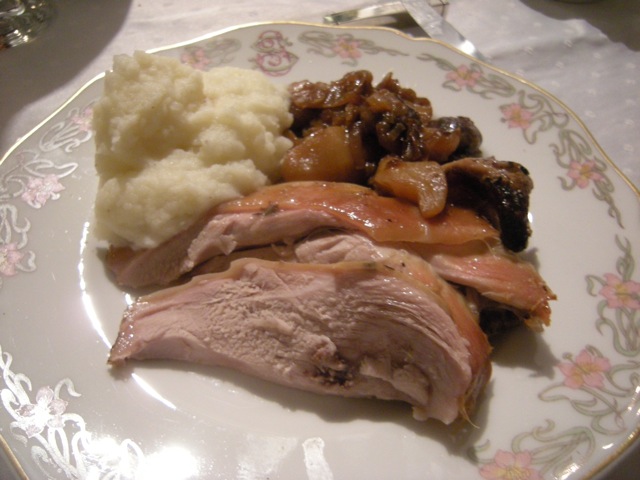
The apple, chestnut & Bourbon dressing (with sautéed minced onions) enhanced the pork flavor. There is a beautiful complementarity between pork and chestnuts, and as for the apples that had slightly caramelized, they added a pleasing hint of tartness.
The Corbières L’Enclos 2005 —from Domaine des 2 Anes— brought the last touch of bliss to the dish. This organic blend of mostly Grenache with Carignan, Mourvèdre and Syrah grapes has an earthy, rich and supple taste that literally “talks to me”!
The light, refreshing Ecuadorian cinnamon rice pudding was a Christmas present from our good friend Eleana and it came as a good conclusion to our excellent meal.
Well, the final punctuation was the digestif & the Laubade Armagnac did bring a few spirits down! Santé to you all!


